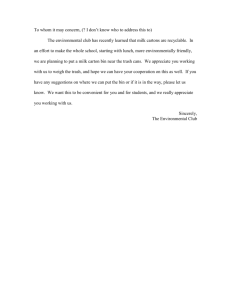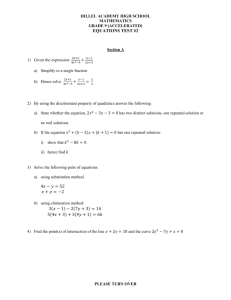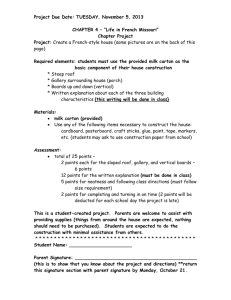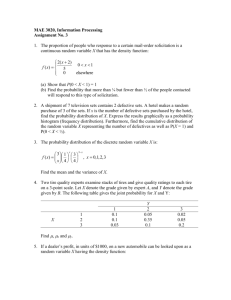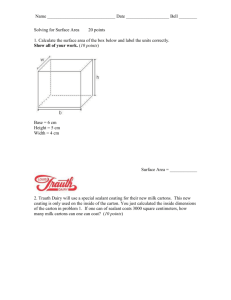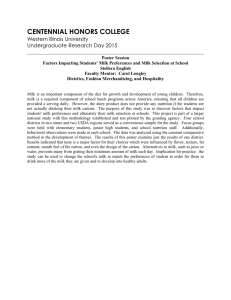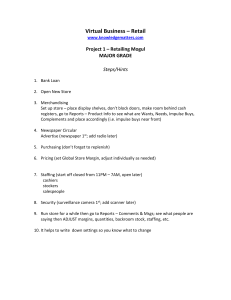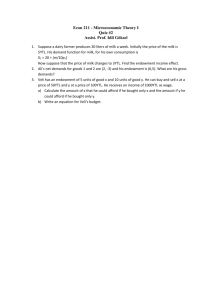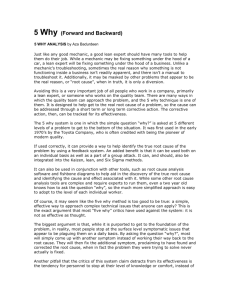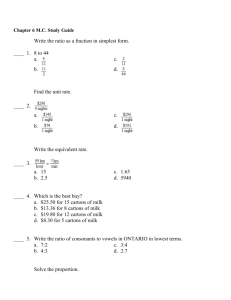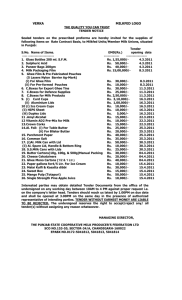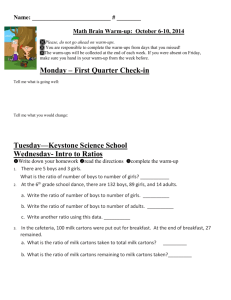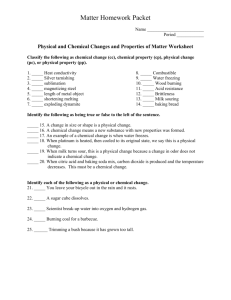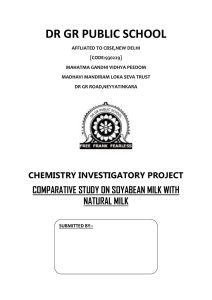Direct and Partial Variation
advertisement
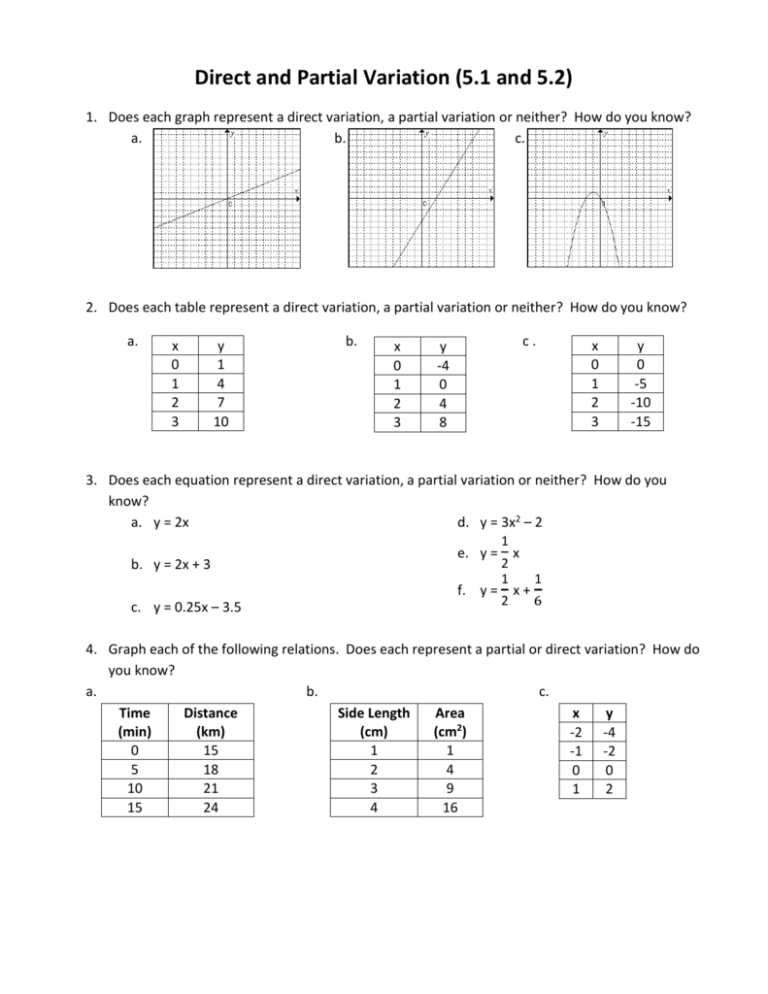
Direct and Partial Variation (5.1 and 5.2) 1. Does each graph represent a direct variation, a partial variation or neither? How do you know? a. b. c. 2. Does each table represent a direct variation, a partial variation or neither? How do you know? a. x 0 1 2 3 y 1 4 7 10 b. x 0 1 2 3 y -4 0 4 8 c. x 0 1 2 3 y 0 -5 -10 -15 3. Does each equation represent a direct variation, a partial variation or neither? How do you know? a. y = 2x d. y = 3x2 – 2 1 e. y = x 2 b. y = 2x + 3 1 1 f. y = x + 2 6 c. y = 0.25x – 3.5 4. Graph each of the following relations. Does each represent a partial or direct variation? How do you know? a. b. c. Time Distance Side Length Area x y (min) (km) (cm) (cm2) -2 -4 0 15 1 1 -1 -2 5 18 2 4 0 0 10 21 3 9 1 2 15 24 4 16 5. Elinor is training for a race. She is able to run 2 kilometres every 10 minutes. a. Which variable is independent and which is dependent? How do you know? b. Create a table of values for this relation (from 0 – 50 by 10s). c. Create a graph for this relation. d. Is this relation a direct or a partial variation? How do you know? e. Create an equation for this relation. 6. John pays for a taxi ride. The fare is $0.50 / km plus a flat rate of $2.50. a. Which variable is independent and which is dependent? How do you know? b. Create a table of values for this relation (from 0 to 50 by 10s). c. Create a graph for this relation. d. Is this relation a direct or a partial variation? How do you know? e. Create an equation for this relation. 7. A van’s gas tank holds 75 L. The van uses 0.125 L / km of gas. a. Which variable is independent and which is dependent? How do you know? b. Create a table of values for this relation (from 0 – 600 by 50s). c. Create a graph for this relation. d. Is this relation a direct or a partial variation? How do you know? e. Create an equation for this relation. f. How long can the van drive before the gas tank is empty? 8. Clarise has $50 in her piggy bank. She takes $2.50 from it each week to buy a hot chocolate and an apple from the cafeteria. a. Which variable is independent and which is dependent? How do you know? b. Create a table of values for this relation (from 0 – 16 by 2s) . c. Create a graph for this relation. d. Is this relation a direct or a partial variation? How do you know? e. Create an equation for this relation. f. For how many weeks can she take money out before the piggy bank is empty? 9. A small rocket is launched from a hill 1500 m above sea level. It rises at 35 m / s. a. Which variable is independent and which is dependent? How do you know? b. Create a table of values for this relation (from 0 to 1000 by 100s). c. Create a graph for this relation. d. Is this relation a direct or a partial variation? How do you know? e. Create an equation for this relation. 10. Students can choose from two different cafeteria milk plans: Plan A : pay $0.75 per carton of milk. Plan B : pay $10, plus $0.25 per carton of milk. a. Write an equation for each plan. b. Determine the cost of 20 cartons of milk for each plan. c. Determine the cost of 30 cartons of milk for each plan. d. Which plan would you choose? Why? e. Identify each plan as a direct variation or a partial variation.
